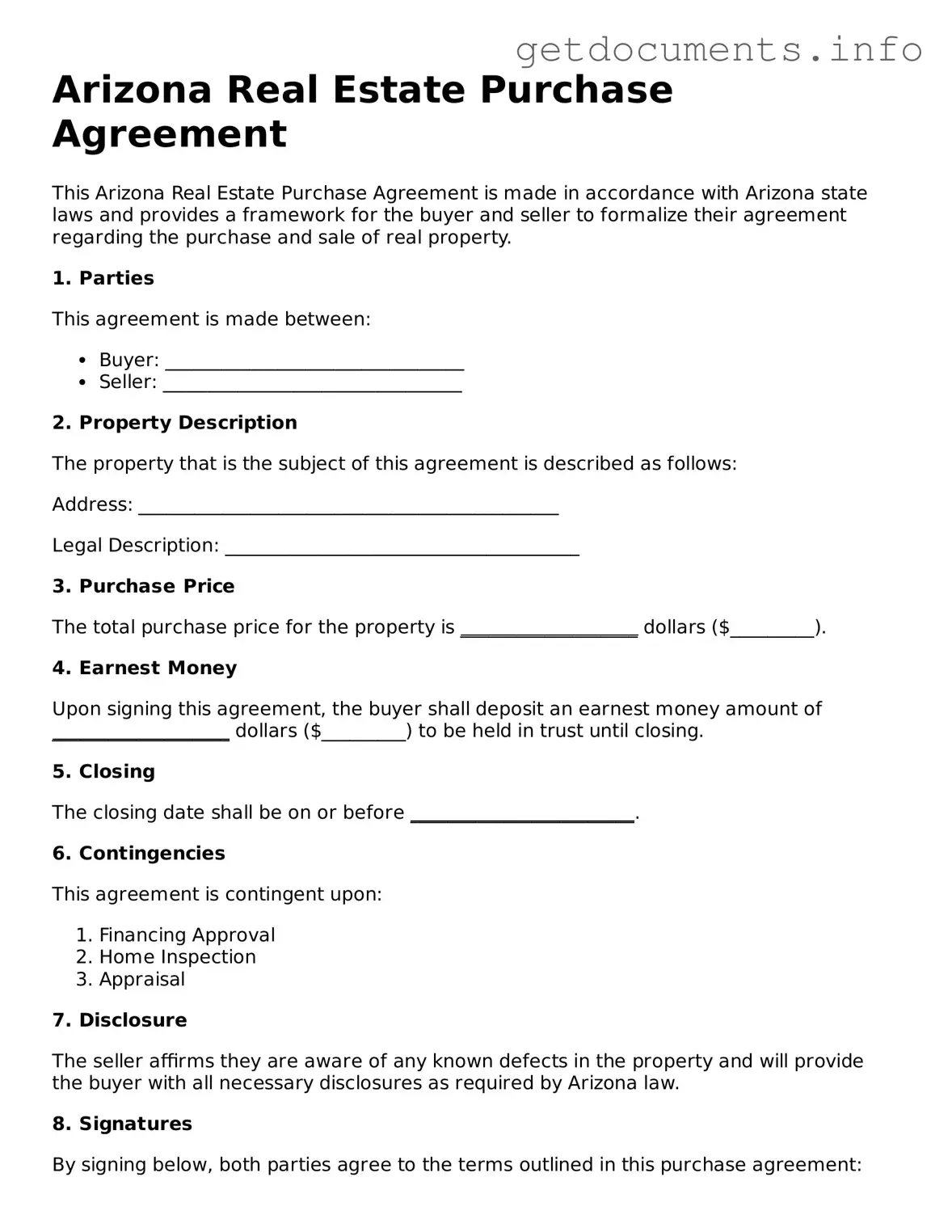Free Real Estate Purchase Agreement Template for Arizona
The Arizona Real Estate Purchase Agreement form is a legal document that outlines the terms and conditions under which a buyer agrees to purchase a property from a seller. This essential agreement serves to protect the interests of both parties while ensuring a clear understanding of the transaction. To get started on your real estate journey, fill out the form by clicking the button below.
Access Real Estate Purchase Agreement Editor
